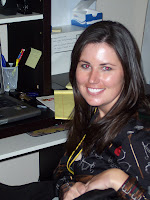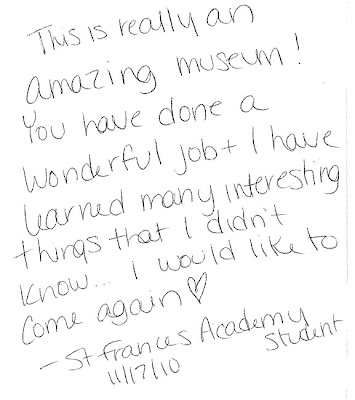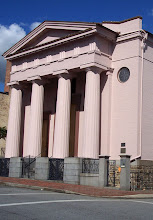A blog post by Sr. Collections Manager, Jobi Zink

Some people would argue that all cholent* is bad. But some cholent is badder than others.
 Genuine cholent recipe from our
Genuine cholent recipe from our
Voices of Lombard Street exhibitionTake for example, the full, unopened can of cholent beans that was accessioned into our collection in 1992. This can of beans is probably more than 20 years old because, let’s face it, the can was probably in someone’s pantry cabinet for at least 2 years before they decided to give it to the Museum rather than to the Boy Scouts’ canned good drive.
In its early years, said can sat quietly on our collections shelves with various other kitchen-related items, including packaging from many garden variety Kosher foods, c. 1980s.
Then one day, Karen Falk, curator of the upcoming
Chosen Food exhibition was perusing the collection for available artifacts. I can’t believe we have this in our collection. A full can? Who has a full can of cholent beans? she thought, holding the can in her gloved hand. Well, we have other, odder things in our collections, she shrugged.
Months went by and Karen continued collecting, planning and developing the exhibit. Then, during a routine inventory of items to be used in the exhibit, she noticed that the can would not sit flat on the shelf. That’s not right, she thought. Was it like that before? she wondered. Nope. The top and bottom lids were distended. Puffy. Ready to blow! Botulism?! Time to bring in the collections manager, Jobi Zink.

No need to panic, I told Karen. I know exactly how to handle this. (Thanks to Things That Go Bump in the Night: When Collections Strike Back, a session presented by Rosie Cook, Registrar (The Chemical Heritage Foundation and Museum), Anna Dhody, Curator (Mutter Museum) and Michael Leister, Director (Air Mobility Command Museum) at the 2010 MAAM Conference.)
It’s a simple 12 step program:
1) Confirm with the Collections Committee that the contents of a collections item potentially containing botulism should indeed be properly disposed of, while the container and its packaging should be saved if possible.

2) Gather the entire collections staff outside to the parking lot on a super-cold day to observe the event. Remind them to stand back to avoid splatter.
3) Charm the custodian into assisting with a very important collections project.
4) Have said custodian pierce the top of a can with a drill to relieve pressure.

5) Flip the can over and employ a standard can opener to open the bottom of the can, releasing 20 year old beans onto newspaper.

6) Discard contents. Preferably wrapped in layers of newspaper. Then industrial strength- plastic bags. Bury deep inside dumpster. Do not inhale. Do not attempt to touch with bare hands.

7) Without using the new kitchen sponge or Esther’s dish towels, wash the inside of the can thoroughly with a lot of soap and hot running water in the industrial sink.
8) Wash again.

9) Lather. Rinse. Repeat.
10) Contemplate ways to eliminate the odor. (oooh yeah, 20 year old beans smell much worse than you imagine!)

11) Do not store the item in your office. Do not store the item in your collections storage. Make sure you identify the can as part of the collection and not something to be recycled!!!!

12) Congratulate yourself on:
a. saving the collections from a potential explosion (… now about that nitrate film)
b. not poisoning yourself with botulism
c. writing an exciting blog post about a can of beans
*Cholent is a stew made of meat, vegetables (onions, carrots), and a variety of beans such as red kidney beans, white beans, cranberry beans, etc. Many people love cholent because it takes hours and hours (like 18 hours!) to make in a crockpot and is therefore Shomer Shabbes friendly.




















































